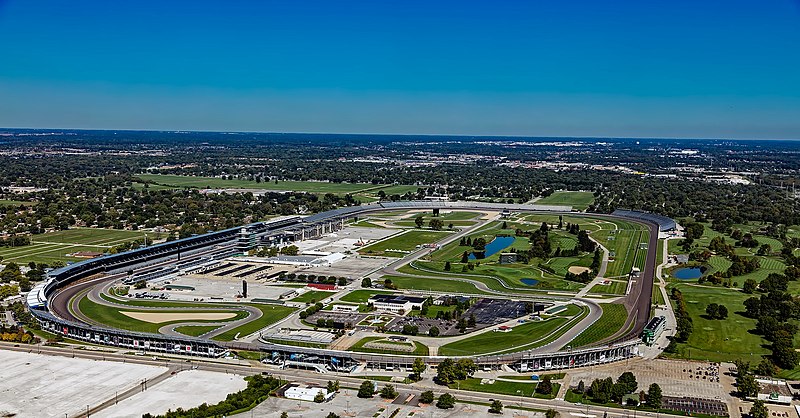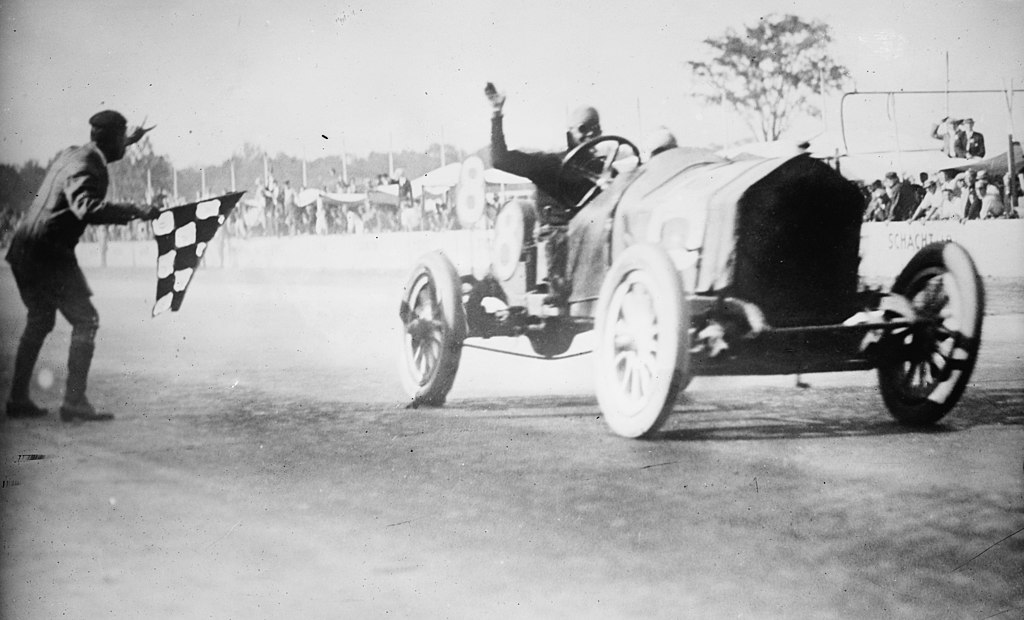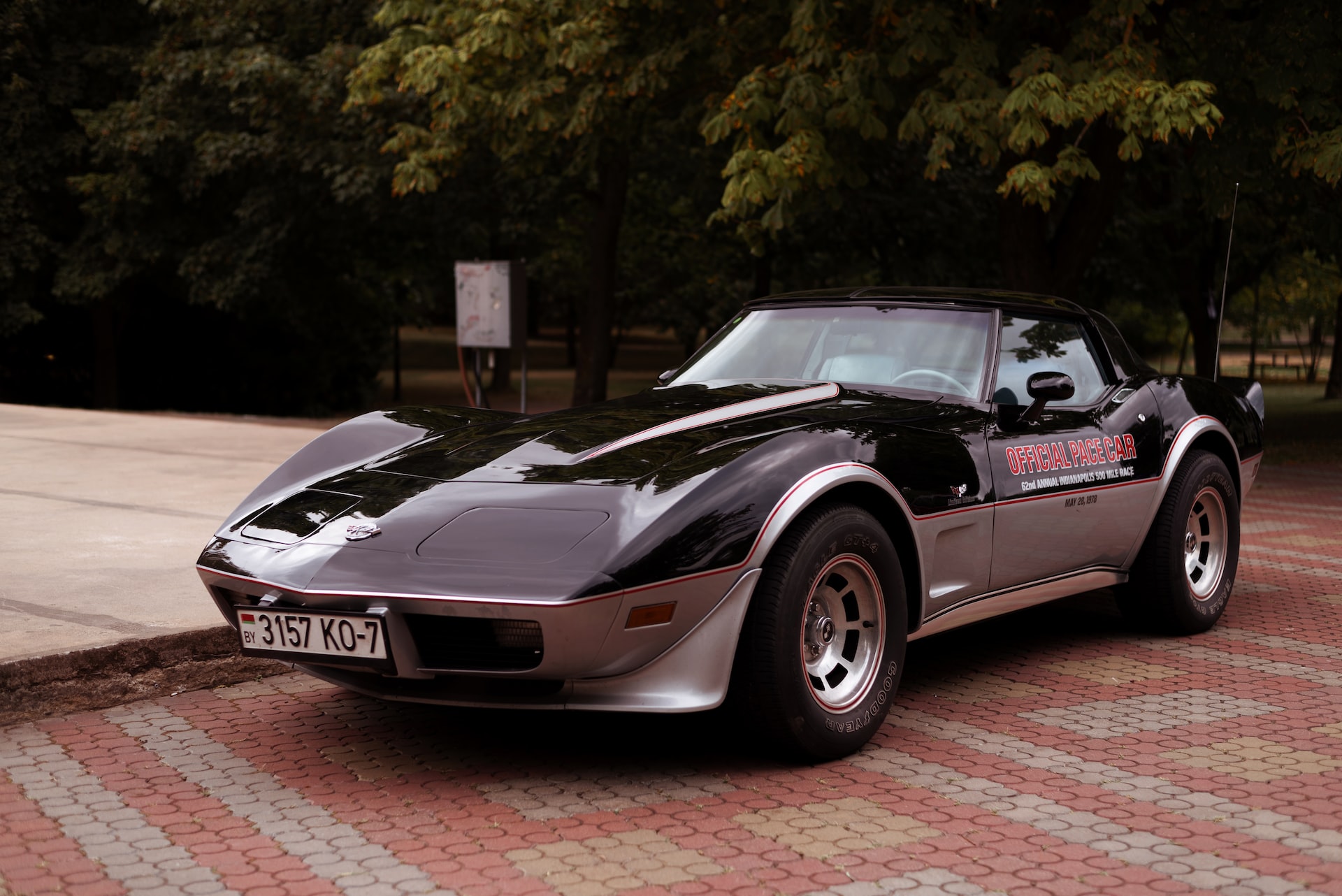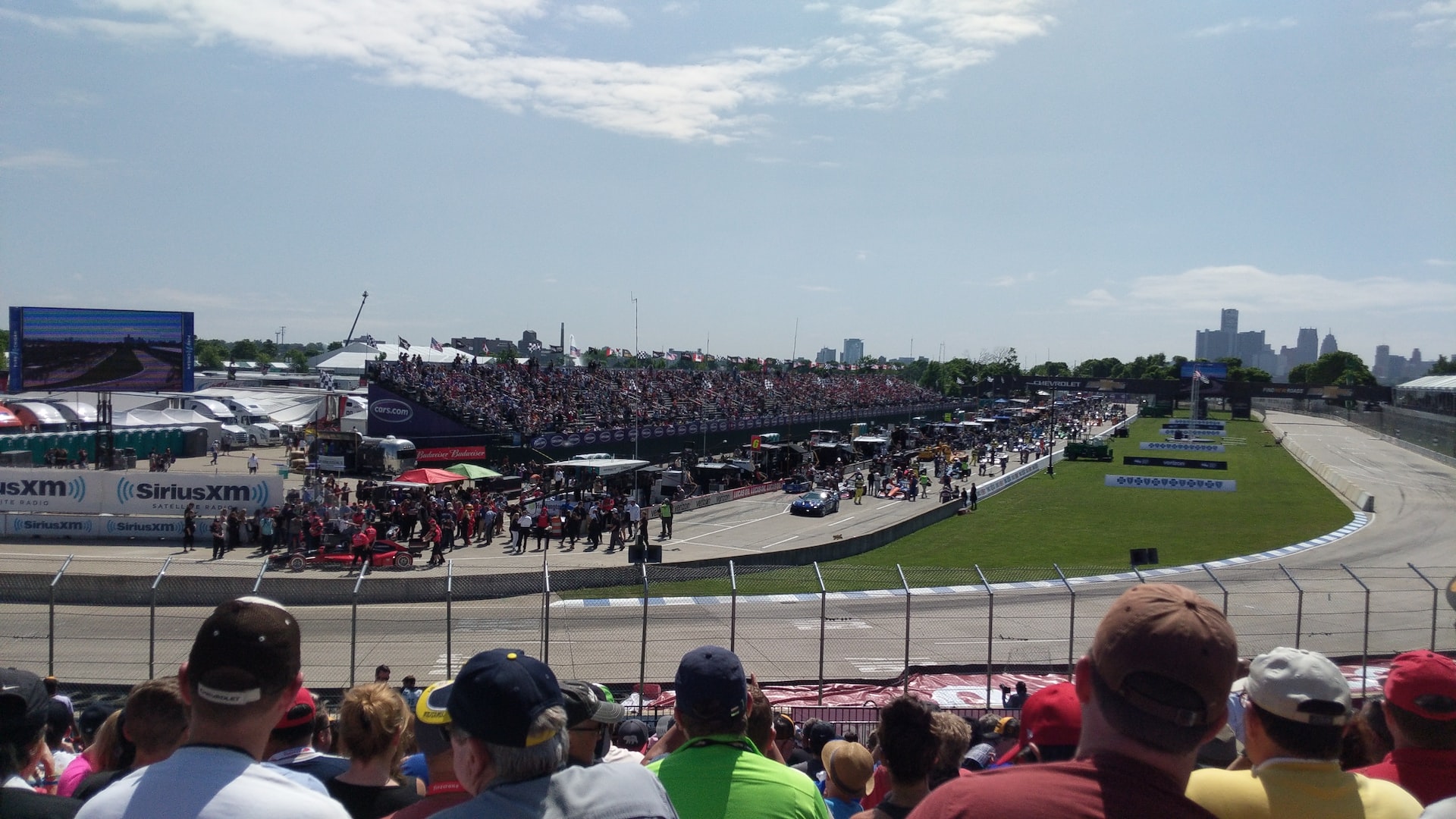Carl Fisher, an Indiana car dealer, got the ball rolling on the construction of a private automobile testing facility in the year 1906. In 1911, he came to the conclusion that he would only run one race each year, but he would make it the most important competition in the United States. It was such a huge success that by the year 1920, the racetrack had become a destination for the most luxurious automobiles.
The Indianapolis 500, which was held in May 2019, came to a close with the 103rd running of the race. On the oval track, 33 drivers competed at speeds greater than 220 miles per hour. Because there can only be 33 cars in the race, the drivers are required to first go through qualifying to demonstrate that they are capable of competing. However, the reward is always commensurate with the effort. The enormous Borg-Warner Trophy, which made its debut in 1936, is up for grabs for whoever comes out on top.
1. Pace Car
One of the many customs involves having a pace car, which is typically driven by a well-known individual. At the beginning of the race, it guides the cars around the track. This tradition came perilously close to being snuffed out in 1971 when the pace car’s brakes failed. A stand was destroyed when a car carrying legendary astronaut John Glenn collided with it.
2. Winners Consume Milk
After winning the race for the third time in 1936, Louis Mayer requested a bottle of buttermilk milk to celebrate his victory. This moment was immortalized in a photograph and went on to become an icon. Since 1956, the winner has been required to consume milk while celebrating Victory Lane. These days, motorists even have the option of selecting milk that is either skim, whole, or 2% fat.
3. An Abrupt Start Following a Pace Car
The majority of Formula One races utilize a standing start, but the Indy 500 utilizes a flying start behind a pace car. Carl Fisher was the one who initially conceived of the idea. He posited that it might be prudent to take the field for one unscored lap in a vehicle traveling at forty miles per hour and then bring the pace car into the pits as a precautionary measure.
4. The Closest Margin of Victory is .043 Seconds
When Al Unser Jr. won the race at Indy by a margin of just.043 seconds over Scott Goodyear, the record for the closest victory margin at Indy was set. That predicament seemed like it was taken straight from a movie. Both Al Unser Jr., who was trying to break, and Scott Goodyear, who was trying to find a way to get around Unser Jr., were moving all over the place.
5. Each Lap Is 2.5 Miles Long
The total distance of the race, which is indicated by its name, is 500 miles, and each lap of the track is measured at a distance of two and a half miles. On the racetrack, there are four turns, and the length of each one is equal to one-quarter of a mile. The next two straightaways are the two main straightaways, which each measure five-eighths of a mile, and the two short chute straightaways, which each measure one-eighth of a mile.
6. The Borg-Warner Trophy Is Sculpted with the Faces of the Winners
In addition to having their name and finishing time engraved on a trophy, the winner of the Indy 500 also has their entire face sculpted onto the side of the trophy as a permanent reminder of their victory. The Borg-Warner Automotive Company spent a whopping $10,000 (equivalent to approximately $211,000 in today’s money) in 1935 to have the Borg-Warner Trophy created so that it could serve as the most prestigious award for the competition.
The winners of the race do not get to keep the trophy, but they do receive a miniature replica of it at a reception held a few months after the race. This replica is referred to as the “Baby Borg.” Over the course of its history, the 110-pound trophy has received new bases to accommodate subsequent winners. As of the year 2022, the trophy will have a total of 108 faces. There is one driver on that list who did not win the race (Anton Hulman, who bought the Indianapolis Motor Speedway in 1945), along with some extra faces for 1924 and 1941, when there were co-winners because one driver started the race and another driver finished it. If the math doesn’t add up, that’s because there is one non-winner on there.
7. The Indianapolis 500 Has Featured Nine Female Drivers
Since 1977, when Janet Guthrie made the first of her three trips to the race, women have been qualifying for and driving in the Indianapolis 500, even though men have traditionally held the majority of leadership roles in the sport. Danica Patrick, who was only the fourth woman to ever start in an Indy race, made history in 2005 by becoming the first woman to ever lead a lap during the competition.
She ultimately came in fourth place that year. Simona De Silvestro and the Paretta Racing Autosport Team made history in 2021 by fielding a crew that was predominantly comprised of female racers.
8. The Indianapolis 500 Has Never Been Won Three Times in a Row by Anyone
There are dynasties in many different sports, such as the New England Patriots of the 2000s and the Chicago Bulls of the 1990s. These teams seize control of their respective sports and refuse to relinquish them for many years. When it comes to the Indy 500, it’s not all that simple to win back-to-back races. There have only ever been five drivers who have won two races in a row, and no one has ever been able to win three races in a row at the same time.
9. Choosing the Winner of the 1981 Indianapolis 500 Took Four Months
Even though Mario Andretti is one of the most successful racers of all time, he was only able to win the Indianapolis 500 once out of a total of 29 attempts. His most infamous attempt was the 1981 race, in which he initially finished second to Bobby Unser but was later declared the winner after Unser was penalized for illegally passing cars while the caution flag was out after the event.
This made his attempt the most notorious of his career. Unser immediately filed an appeal against the decision, and after several months of back-and-forth, the penalty was overturned, and he was once again crowned the winner, with Andretti finishing in second place.
10. Since It Began, the Winner’s Average Speed Has More Than Doubled
What a difference one hundred years of technological advancement can make. In 1911, Ray Harroun’s Marmon Wasp race car won the competition with an average speed of 74.602 miles per hour. Fast forward to the year 2021, and the winning driver, Helio Castroneves, clocked in at an incredible 190.69 miles per hour around the track. But that’s just the speed at which things move on average: Eddie Cheever set the record for the fastest single lap in 1996 with a ridiculous speed of 236.103 miles per hour.
11. The First Successful Vehicle Also Had the First Rearview Mirror
In the races that took place in 1911, competitors typically had a mechanic sitting next to them in the car so that he could alert them when other drivers approached from their side. Harroun did not possess any of them. Instead, he rigged up his Marmon with a rearview mirror, which was something he’d noticed on a horse-drawn cab in the past.
12. One Trophy
Only one trophy, known as the Borg-Warner Trophy, is awarded to the winner of the Indy 500, and it is passed on to the winner of the race the following year. A miniature statue of a man who is not clothed sits atop it. In addition to that, it has miniature carvings of the faces of every driver who has ever won the race. It’s not only one of the heaviest trophies in sports, but also one of the creepiest.
13. The Brickyard is Also the Indy 500
The Brickyard is the official nickname given to the Indy 500 by its organizers. The name derives from the fact that the course was originally laid out using actual bricks. Even though they were eventually changed out for asphalt, the starting line of the speedway still has a strip of brick that is 36 inches wide. Winners of the Indy 500 still get down on one knee and kiss these bricks after the race.
14. The Day of Carbs on Friday
After the drivers have found out who has qualified for the Indy 500, they will be allowed to practice. This happens every week on Friday, and the day of the event is referred to as Carb Day, which is an abbreviation for Carburation Day. In the past, teams would use this time to calibrate the carburetors in their vehicles. There is the possibility of additional attendees.
15. Best Female Performance
In 2005, Danica Patrick made history by becoming the first woman ever to take the lead in the Indy 500. She finished in fourth place, three spots behind Vitor Meira and two spots behind Bryan Herta. Because of her incredible performance, she will be remembered in the annals of history alongside Janet Guthrie, who was the first woman to compete in the Indianapolis 500.
16. The lead was lost by 2 drivers on lap 199
Robby Gordon experienced a string of misfortunes in 1999. In the final turn of the race, he ran out of fuel. Kenny Brack took the initiative and ended up winning. In addition to that, it was the most profitable race for A. J. Foyt Enterprises. In 2006, Marco Andretti was victimized in the same manner. Just 450 feet from the finish line, another driver overtook him and passed him.
17. The Indy 500 was four times won by A. J. Foyt
A. J. Foyt was an American race car driver who competed in dozens of different types of motorsports during his career. Despite this, he is most famous for two accomplishments: accumulating 159 victories over the course of his career and being the only person to ever win the Indianapolis 500 four times. Additionally, he holds the record for the third-oldest winner of the Indianapolis 500.
18. Filling a Car with Gas Takes Only Six Seconds
Because time is of the essence during the Indy 500, the crew at the pit stop has mastered the art of refueling a vehicle in fewer than six seconds. Even more, there is a competition called the Pit Stop Challenge that takes place on Carb Day. The top twelve teams are required to make four tire changes and act out a refueling.
19. Four-Month Race
In 1981, it appeared that Bobby Unser had won the Indianapolis 500 by a margin of 5.8 seconds over the runner-up, Mario Andretti. However, Andretti protested, arguing that Unser ought to have been penalized for passing cars while a yellow flag was in effect. The case was decided in Unser’s favor after it dragged on for a total of four months.
20. Out of 200 laps, Billy Arnold led 198.
The driver who started from the pole position, Billy Arnold, was the one to take the lead on lap 3, and he remained in the lead throughout the rest of the race. He set a new record for the Indy 500 race by leading for a total of 198 consecutive laps, which earned him a record. Notable to mention is the fact that he was accompanied by the professional riding mechanic Spider Matlock.
21. Indy 500 Is Not in Indy
Yes, the Indianapolis 500 race does not take place in the city of Indianapolis proper. Officially, the race takes place in the town of Speedway, Indiana, which is located approximately 5 miles to the northwest of the state capital. The town was established initially to house workers for the raceway as well as for nearby auto factories.
One of the most well-known and prestigious auto racing competitions in the world is the Indianapolis 500. When it was first held at the Indianapolis Motor Speedway in 1911, the Indianapolis 500 was billed as a grueling all-day race that was intended to earn publicity for new car models and bring in a large number of spectators. Because it was such a resounding success, the competition has since earned a permanent spot in the annals of sporting history.




